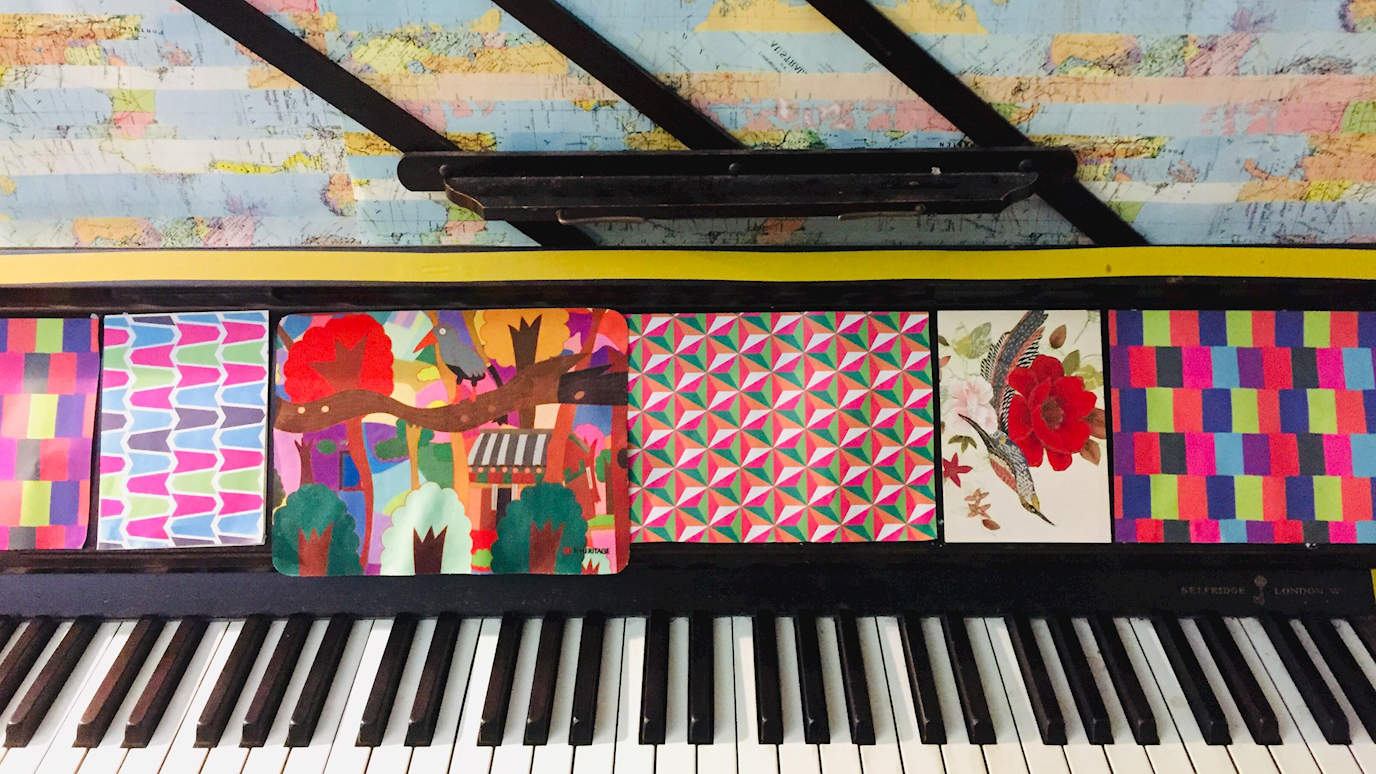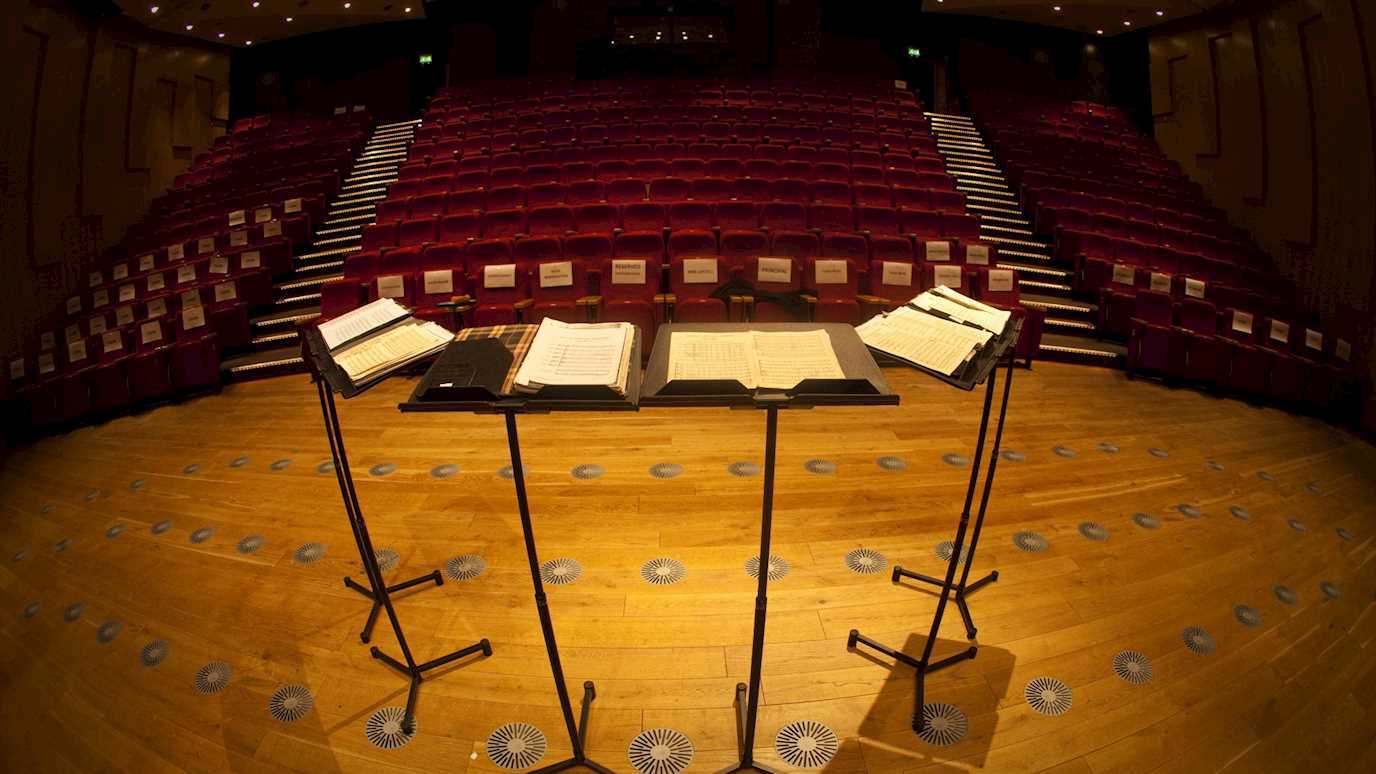Organisers: Maiko Kawabata (Royal College of Music), Shzr Ee Tan (Royal Holloway, University, of London)
For the Followup Conference to this event on Racialised Performances in Western Classical Music, on June 22, 2020, please click here.
The myth of Western classical music as an international language has elevated its false claims to universality. This music has been troped through the past 200 years as the cultural doxa (Kingsbury 1988, Nettl 1996, Nooshin 2013) in spite or because of its hidden and deeply embedded histories of cultural imperialism and racial oppression. By this we refer to deeper structural oppressions brought about by imperialist campaigns and colonisations via pianos, not only guns, which came as the final ratification of their hegemony. Among the traces of this history are everyday examples of casual and institutional racism found in, for example, the micro-aggressive exclusion of and casual racism towards non-white staff and non-white students at UK and European music institutions – university music departments, conservatoires, competitions, and orchestras (membership, boards and management).
While phenomena above have long been discussed in the field of ethnomusicology over several decades, they still remain openly unacknowledged in the actual practising of Western Classical Music around the world today. However, as global politics shift with the (imagined) politico-economic rise of East Asia (particularly, China) as a global cultural player, such oppressions are beginning to be re-understood in fresh light. We seek to call out again, and unpack some of these structural inequalities in the Western classical music industry at large by focussing on hitherto undocumented examples of racism against East Asian musicians (‘Yellow Peril’) in the UK and Europe. The prejudice that such musicians excel technically but not musically has coalesced most visibly into stereotypes of the robot/automaton or exotic sex toys in the case of some females (Scharff 2017, Tan 2013, Yang 2014, Yoshihara 2007, Kawabata 2004). That this is happening in a climate of heavy recruitment of students from China, Hong Kong, Japan, Korea, Malaysia, and Singapore – countries which provide considerable revenue streams – lends urgency to its exposure. Students from these countries also bring with them the image of the ‘model minority’ who are perceived as non-threatening, disciplined, hard-working, and respectful of elders, derived from (variously) Confucianism, rote-memorisation, teacher-emulation, ‘Tiger Moms’, the Suzuki method, the colonialist reach of ABRSM, etc. (Chua 2011, Kok 2006, Tan 2013). While we propose to focus on East Asian transnationalisms in Europe and the UK, the positioning of East Asian musicians and music researchers in an intersectional context (various BME communities, gender, class, in interaction with Asian-American debates) is another complex issue of interest.
In the zeitgeist of #MeToo and emerging perspectives on decolonisation, it is timely to pose the following questions:
1. What is the new ‘Yellow Peril’ in Western Classical Music?
As per our introduction, we interrogate the construction of musicians and musical institutions projected as originating from East Asia but practising in global Western Classical Music scenes as alternate ‘threats’ to and ‘saviours’ of an imagined ailing industry. Stereotypes of East Asian performers as non-spontaneous and didactic technicians have abounded over the past few decades, whether heard in the whisperings of conservatoire corridors or in newspaper music reviews.
However, with the rise of East Asia – particularly, China as a rising economic power, and Japan as the world’s second largest music market – the mass cultural consumption of classical music has been feted as deployed to a large extent to these new growth areas outside of Europe and the United States. As new concert halls continue to open in China alongside its aggressive domestic and international cultural diplomacy campaigns, more students than ever from East Asia have begun to enroll in conservatories in Europe and the United States, joining their Asian-American or European-born counterparts.
Here, unsettled re-projections begin to emerge as new cultural shifts take effect: the new cultural consumption power of East Asian musicians, while celebrated, have also drawn suspicion from self-appointed tradition bearers. What are their motivations? Will they take over aesthetic styles, interpretations, pedagogy, jobs and institutional power structures? Will they ‘go home’, or ‘stay’, or hit global superstardom? And yet, there is no single monolithic category of East Asian musicians, as intersectional hierarchies across gender, generational histories, and also across different Japanese, Korean and Chinese communities and their associated notions of musicianship and motivations compete for dominance in conversational representation. For many, the privileging of a personal career within diasporic and dislocated contexts goes beyond old-school transnational dialogues where exchanges take place in zig-zag patterns, and back and forth. Often the (elitist) approach of aspirational cosmopolitanism (Tan 2017) comes to fore where East Asian musicians see themselves as freshly arrived ‘citizens of the world’, and seek to fully embrace Yellowness-as-equally-entitled to consuming and appropriating Whiteness in artistic and musical identity in an imagined equal playing field.
2. How can one construct a truly inclusive history of Western classical music fit for the purposes of a progressive 21st-century education?
In contradistinction to Locating East Asia in Western Art Music (Everett and Lau 2004) we propose: Locating Western Art Music in East Asia, and locating East Asians in Western Art Music. Following the approach of Nathan Glazer (1998) in deploying the lens of transformative multiculturalism as opposed to additive multiculturalism, we pursue this line of enquiry not simply in looking towards East Asian musicians and music consumers as an alternative/ additional voice in various conversations unfolding around the construction of Western Art Music, but in their direct impact on global structures of musical production, the (un)making of musical aesthetics and the (re)institutionalization of canons. In this respect we also look towards Koichi Iwabuchi’s (2002) theory on the recentering of globalization, and understand the contributions of East Asia and East Asian musicians from a non-othered perspective.
3. What are the ramifications for East Asians of the myth of Western classical music as a universal language?
To state that Western classical music is an example of cultures of circulation seems oblivious to its inherent elitism, dependent on access to expensive instruments, training and practice-hours, and a musical language posited as singular, natural and supreme. Western music notation, and particularly functional harmony and the diatonic system, has recently come to be contested as the lingua franca of university music curricula (e.g. Harvard University). The myth of Western classical music as a universal language, and the historicisation of canonic composers as mythical supreme arbiters of creativity-at-source, has started to be exposed by such movements within Western Classical Music-centric educational institutions. While scholarship in ethnomusicology has long identified these problems, it is only in recent years that university music departments and to a much less extent, conservatories (mostly outside of the UK and Europe) have taken active steps in revising curricula and teaching practices.
4. What are the ways forward?
In seeking to identify solutions to the problems described above, we seek to create a safe space for challenging conversations to happen. We take into serious consideration ethical concerns regarding differently-staked perspectives/ privileges in regard to the issues we have raised, as also issues of privacy/ anonymity, conscious and unconscious biases and fears of recrimination for speaking out. We also draw inspiration from the advances made by our colleagues in American History and in Asian American studies – since much of the laying of the groundwork has already been achieved, there is no need for us to reinvent the wheel in terms of methods. In particular, we are encouraged by Miya Masaoka’s free koto improvisations (in collaboration withGeorge Lewis) as a form of Asian-American resistance (Wong 2004); Dorinne Kondo’s work on Asian-American theatre and what she has termed ‘counter-orientalism’, also as a mode of resistance (Kondo 1997); and Deborah Wong’s theory of ‘the Asian American body’ in jazz, hip-hop, and taiko performance (Wong 2004).
Simultaneously, however, a sensitivity must be taken in recognising the distinctly different context of the UK and Europe. Because race relations in the US have long been polarised along black/white lines, or along lines of indigeneity, theorizing yellowness has always conditioned by these two polarities (see Frank Wu and others) – a condition that simply does not apply in the UK/Europe. Rather, yellowness and the ‘yellow peril’ are set against the backdrop of former empires and postcolonialism and shifts the debate to class and race or at least to considering them in intersectional interaction.
We invite proposals for activism, educational reform, artistic platforms, performances, web activity, and further research to make the practice of Western classical music more inclusive.
Programme
The Study Day will include two round-table discussions on the above themes, a networking tea-break, and also a short performance followed by a Q & A session. More details will be updated on the event registration site.
Speakers/ performers will include:
- Vijay Iyer
- Maiko Kawabata
- Shzr Ee Tan
- Weida Wang
For more information, please email mai.kawabata@rcm.ac.uk and shzree.tan@rhul.ac.uk.
To sign up for the Study Day as a participant, please visit this link and fill in your details.
























